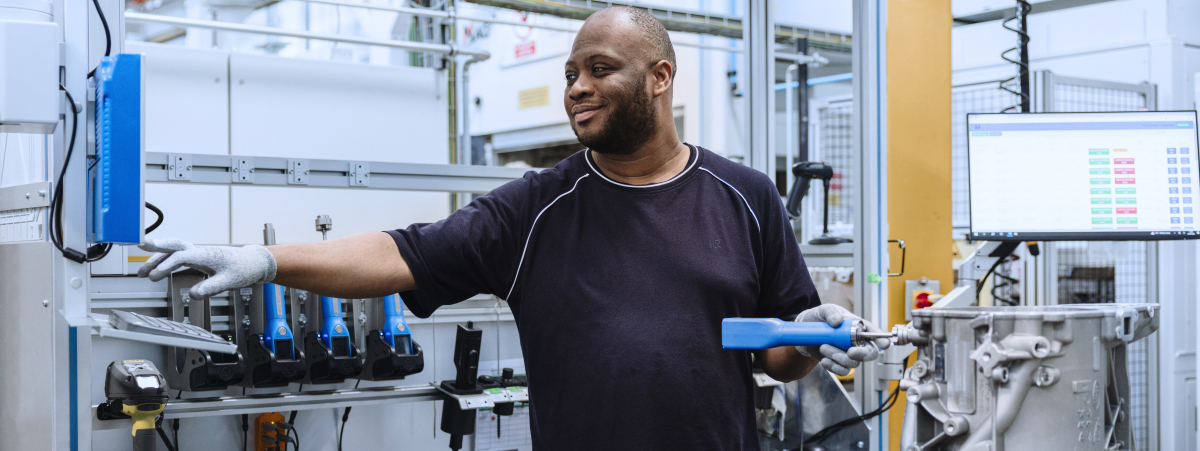- JLR is reducing waste as it transforms its global production facilities for electrification through the reuse, refurbishment and repurposing of tools and equipment, instead of purchasing new
- Scale of asset redeployment across the luxury automotive manufacturer’s UK and European factories is worth over £100m of value to date and would cover seven football pitches with equipment
- New global digital asset management system will further automate processes and scale up future reuse projects
- JLR is optimising reuse in its operations to balance capability requirements and CO2e impact as it transitions to deliver electric models across all its brands by 2030, and aims to achieve net zero by 2039, through its Reimagine strategy
Gaydon, UK – 29 APRIL 2025: JLR is reducing waste across its industrial operations in the UK and Europe through a £100m reuse, refurbishment, repurposing and recycling drive.
As its electrification transformation progresses to the next stage, with the upcoming launch of Range Rover Electric, JLR’s industrial operations are readying themselves for the next generation of electric vehicles and undergoing a revamp across all facilities.
As a result, tens of thousands of pieces of equipment and tools – spanning from entire production lines to screwdrivers – have been put back in circulation, when possible, after considering factors such as standard compliance, availability of spare parts, cost of refurbishment and servicing, potential scrap as well as sale revenues.
Instead of buying new equipment, JLR has reused over 50,000 square meters of kit – the equivalent of seven football pitches – from Castle Bromwich which ceased production last year, the Electric Propulsion Manufacturing Centre (EPMC) in Wolverhampton and Graz, Austria and redeployed it across JLR sites in the UK and Nitra, Slovakia. Meanwhile hundreds of second‑life robots are now installed at Solihull, Halewood, and the EPMC in Wolverhampton ready to produce JLR’s next generation electric vehicles and battery packs.
In addition, 18,600 tonnes of scrapped metal from Castle Bromwich and Graz have been sent to a supplier for recycling, helping to enable the reduction of CO2e emissions by 1,258kg per tonne of new steel generated from scrapped metal.1
As we are entering a critical phase in our electrification journey, JLR has at heart and aims to act as a responsible user of resources by enhancing product utility and longevity, and maximising recycling and repurposing.
It’s not only the right thing to do, but it also improves profitability and increases supply chain resilience. Through these initiatives, JLR advocates that sustainable choices are not always more expensive, they can help reduce costs and even become opportunities for the growth and development of our colleagues.
Andrea Debbane
Chief Sustainability Officer, JLR
The circularity drive has been led by a broad cross‑functional group with members from Industrial Operations through to Vehicle Programmes – working across sites and technologies to identify asset reuse opportunities.
A new digital management system has also been developed in‑house, aiming to manage the life of every vehicle programme asset from acquisition through to sale, scrapping and reuse. The solution will include an internal marketplace where a catalogue of assets will be available for purchase, streamlining and scaling up future projects. Across facilities, the teams have also built new valuable technical, maintenance and safety skills, bringing refurbishment and recalibration of tools to production standards on site.
Circularity plays a major role in JLR’s transformation in becoming a more sustainable modern luxury business. JLR’s approach to addressing environmental impacts beyond tailpipe emissions enables meaningful change within the company, with the ambition of setting a new benchmark in environmental and societal impact for business.
1Supplier data: 442kg CO2e per tonne of new steel created from scraped metal. 1,700kg CO2e per tonne of new steel created from scratch (as accurate of 29th April 2025).










